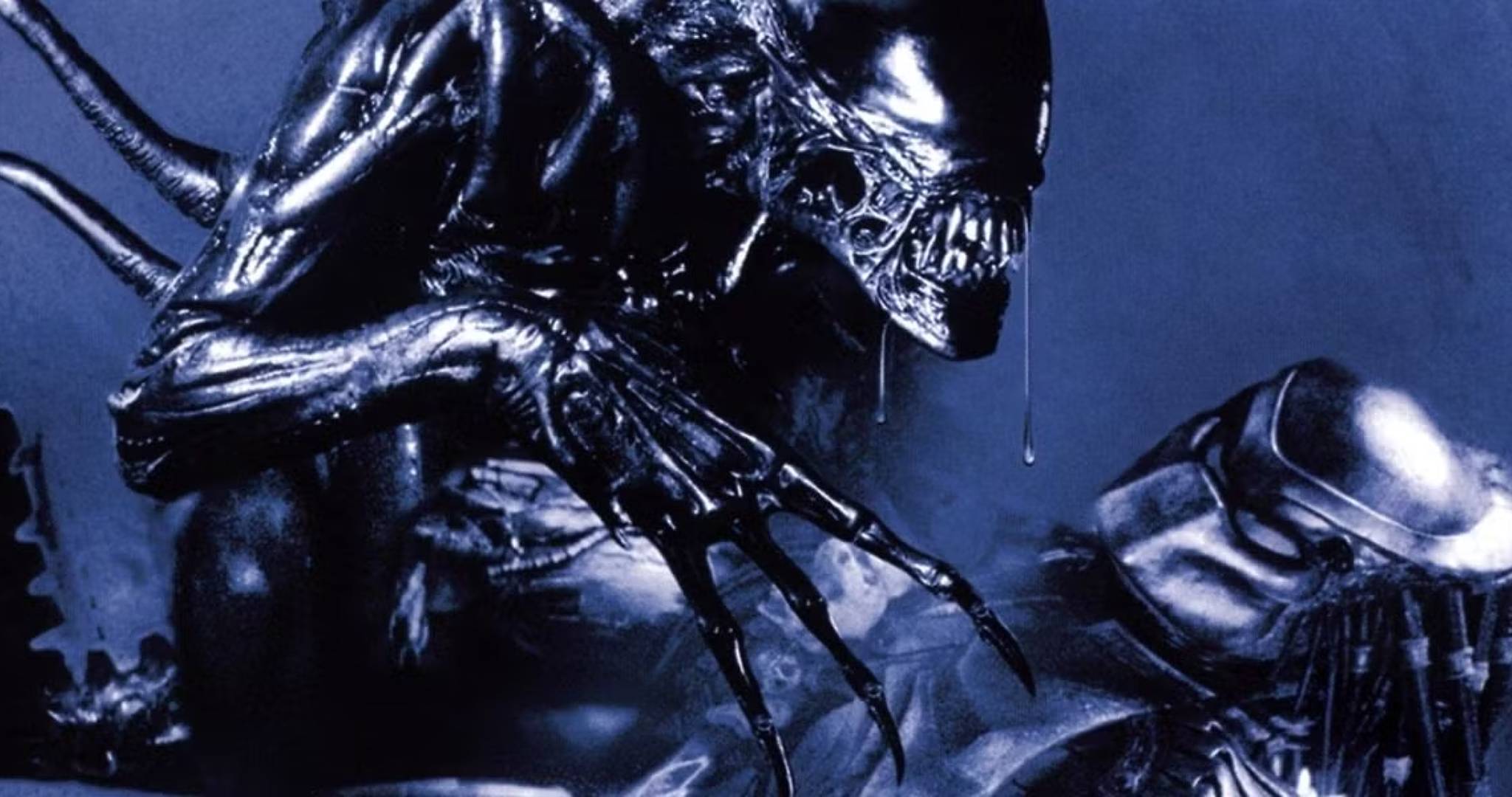
As a seasoned movie critic who has witnessed the rise and fall of countless cinematic ventures, I can confidently say that the Alien vs. Predator saga has long been in need of a fresh perspective. The original Dark Horse Comics series from 1990 serves as the blueprint for a successful crossover, offering a rich tapestry of character development, cultural exchange, and breathtaking action sequences that have eluded the big screen adaptations thus far.
As Hollywood ponders another Alien vs. Predator movie, it seems the ideal blueprint has been there all along, unnoticed for more than three decades. The foundation was laid by Dark Horse Comics’ 1990 crossover series, not only introducing the idea but also creating a tale that lived up to the prestige of both legendary franchises.
The storyline of the original comic kicks off with a clever introduction: Predators are keeping a captured Xenomorph Queen, using her eggs to colonize planets for future hunts. This idea, hinted at in the 2004 film, is much more complex and thought-provoking when presented in the comic format, as it delves into the Predators’ strategies and social structure.
The story primarily revolves around Planet Ryushi, a place where Xenomorph eggs have been tactically placed by Predators. It’s not just about monsters fighting; it’s a more intricate tale of clashing species and the transformation of Machiko Noguchi, a corporate representative, into a warrior. After witnessing the horrific encounter between these two species, she evolves. Her story reaches its peak when she gains the respect of a Predator called “Broken Tusk,” who acknowledges her as an honorary member of their hunting society. This unique bond between human and Predator showcases aspects of depth that have been lacking in the film adaptations. The comic series delves into themes such as honor, survival, and cultural exchange while offering thrilling action scenes featuring Xenomorphs mutated uniquely to reflect their non-human hosts.
In recent times, there’s been a considerable rise in the likelihood of accurate adaptations, as indicated by 20th Century Studios president Steve Asbell. He hinted at a novel strategy for crossovers, implying that future versions will be developed naturally through character growth instead of just throwing together monsters. This shift in studio mindset aligns with recent triumphs in both franchises. The film Prey showed how careful character development and cultural accuracy could revive a series like Predator, by focusing on a Comanche warrior’s tale while maintaining the franchise’s action-horror essence. This film’s success underscores that audiences are open to new viewpoints, as long as they are thoughtfully executed with due regard for the original content.
Currently, ventures such as “Alien: Romulus” and Noah Hawley’s TV series demonstrate a readiness to delve into the Xenomorph lore from fresh perspectives. This implies that the studio recognizes these franchises require more than mere monster action to captivate modern audiences. The trend towards narrative that emphasizes character development and universe expansion suggests we may be on the cusp of a sophisticated blend of these legendary properties, offering a more refined approach.
The “Fire and Stone” comic series presents another engaging model, illustrating how to seamlessly combine various narratives into a single, epic tale. This series intertwines stories spanning diverse time periods, such as the aftermath of “Prometheus,” linking characters and plotlines between both franchises. By incorporating elements of survival horror, space exploration, and high-octane action, it demonstrates how multiple storylines can enrich rather than weaken the fundamental aspects of both originals. The structure – comprising four standalone series leading to a unifying finale – serves as a blueprint for the expansive, interconnected storytelling that contemporary audiences now anticipate from franchises like the MCU, while preserving the ominous, suspenseful vibe that both series require.
The original comics also tackled themes that resonate more strongly today. The corporate exploitation angle, environmental concerns, and questions of cultural understanding could provide rich territory for contemporary filmmakers. Modern Hollywood’s emphasis on meticulous world-building and franchise preservation suggests the industry is finally equipped to deliver the sophisticated adaptation these properties deserve. Earlier film attempts suffered from prioritizing spectacle over substance. The 2004 film and its 2007 sequel achieved commercial success but failed to capture the deeper elements that made the comic series compelling. Today’s franchise landscape, however, favors the kind of careful world-building and character development that made the original comics successful.
In their current resurgences, there’s a chance for these two popular franchises to collaborate and achieve mutual success. By delving back into the original source material and incorporating its bolder aspects, filmmakers can produce a product that pays tribute to both franchises while also venturing into uncharted territories. The comics demonstrated that these properties could coexist without undermining their individual impacts. Now, with advanced technology and more sophisticated storytelling, cinema may finally be capable of achieving the same feat.
Read More
2024-11-24 06:39